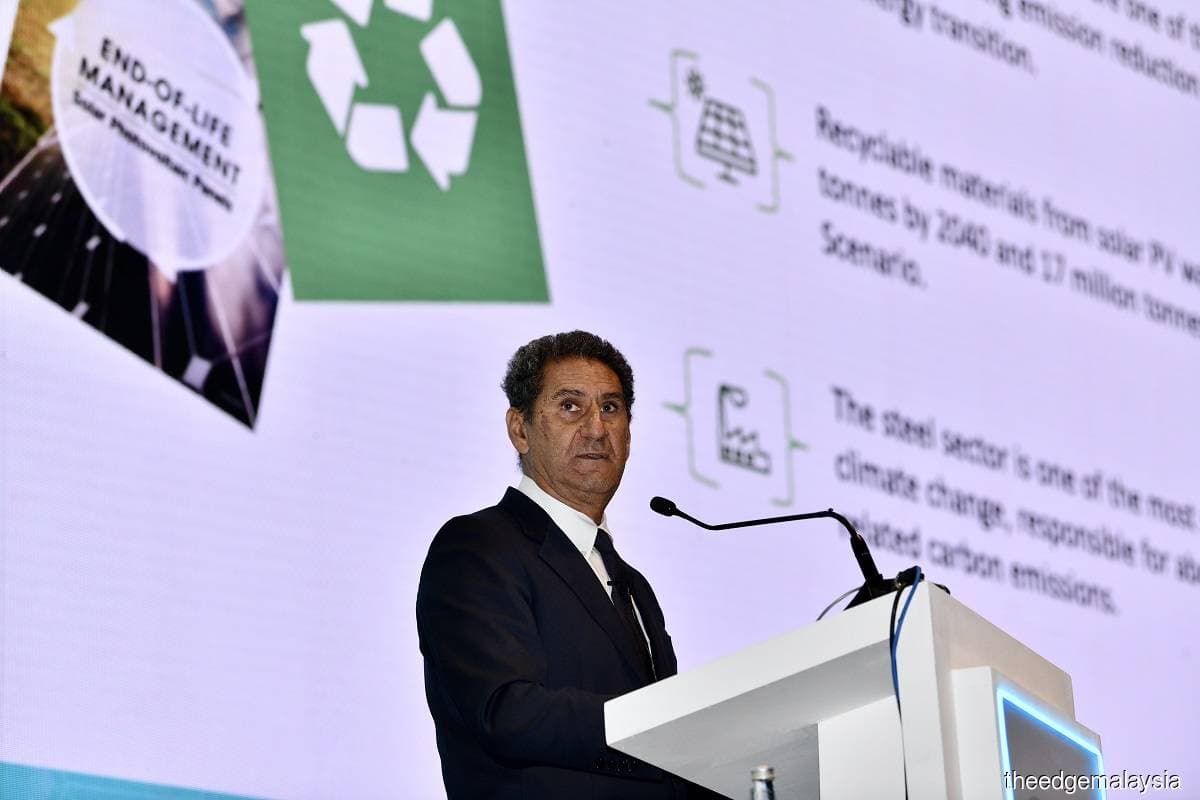
KUALA LUMPUR (Aug 28): Inequality in renewable energy (RE) investments and deployments continued to grow, even as the world posted a record year in capacity additions in 2022, said the International Renewable Energy Agency (Irena) director general Francesco La Camera at the Energy Transition Conference 2023 held on Monday (Aug 28).
Global RE capacity addition rose to 295GW (gigawatts) in 2022, compared with just slightly above 150GW as recently as in 2018, according to Irena’s World Energy Transition Outlook Report 2023.
However, RE investments have been unequal across regions, with more than half of the world’s population receiving only 15% of such investments.
Disparities in per capita investments in the sector “have more than doubled” in 2021, compared with 2015 levels, La Camera said, pointing to per capita capacity of around 1.2MW (megawatt) in Oceania and Europe, compared with as low as 0.04MW in Africa, and 0.1MW in the Middle East.
“85% of this investment benefits less than 15% of the population. We need to address this imbalance urgently, by quadrupling annual investment and more equitable financial flow,” La Camera said during the plenary session at The Energy Transition Conference 2023.
While Irena studies found that RE costs have been decreasing, equitable energy actions must be ensured. “Expanding RE deployments to developing nations being deprived of access, is a moral imperative,” he said.
According to the Energy Transition Commission, the transition would require 6.5 billion tonnes of end-use materials from 2022 to 2050, of which 95% would be steel, copper and aluminium, with the remaining 325 million tonnes or 5% derived from critical minerals such as lithium, cobalt, graphite and other rare earth minerals.
The trends expected by Irena in the foreseeable future of energy transition include physical constraints, as demand for critical materials like rare earth elements rise, aside from development of disruptive innovations, and potentials of scaling up circular economy both to address consumption of such materials.
“The energy transition will be the main driver of demand for critical minerals, and no country can fulfill its demand for all critical materials alone. This is a chance to rewrite the legacy of the extractive industry,” La Camera said.
At the same time, key geopolitical risks loom over the supply of such materials, ranging from resource nationalism to export restrictions, presence of mineral cartels and market manipulations.
“The most important variable in energy transition is time,” La Camera said.
“We need to triple the existing RE capacity to meet the 1.5°C pathway (by 2050). And if we do not do it now (the annual commitment increases over time), we will not have the capacity to do all this. The costs will rise dramatically, and we simply cannot get the results done (in addressing the temperature rise),” he added.
Read also:
Energy transition must be inclusive, needs joint commitment of stakeholders — TNB chairman
Nik Nazmi: Developed nations bear responsibility for aiding developing counterparts in energy transition
Malaysia to launch hydrogen roadmap this year as it seeks hydrogen investments
Phase two of NETR to focus on biomass, waste-to-energy, carbon capture
Malaysia’s fuel subsidy holding back EV adoption, says Gentari deputy CEO
EV adoption in Malaysia outpacing charger deployment, says Gentari deputy CEO
RE sector not getting sufficient support from banks, energy conference told
Gas pricing model key for sustainable power generation in Malaysia's energy transition, says MGA chief
